- News
- Reviews
- Bikes
- Accessories
- Accessories - misc
- Computer mounts
- Bags
- Bar ends
- Bike bags & cases
- Bottle cages
- Bottles
- Cameras
- Car racks
- Child seats
- Computers
- Glasses
- GPS units
- Helmets
- Lights - front
- Lights - rear
- Lights - sets
- Locks
- Mirrors
- Mudguards
- Racks
- Pumps & CO2 inflators
- Puncture kits
- Reflectives
- Smart watches
- Stands and racks
- Trailers
- Clothing
- Components
- Bar tape & grips
- Bottom brackets
- Brake & gear cables
- Brake & STI levers
- Brake pads & spares
- Brakes
- Cassettes & freewheels
- Chains
- Chainsets & chainrings
- Derailleurs - front
- Derailleurs - rear
- Forks
- Gear levers & shifters
- Groupsets
- Handlebars & extensions
- Headsets
- Hubs
- Inner tubes
- Pedals
- Quick releases & skewers
- Saddles
- Seatposts
- Stems
- Wheels
- Tyres
- Health, fitness and nutrition
- Tools and workshop
- Miscellaneous
- Cross country mountain bikes
- Tubeless valves
- Buyers Guides
- Features
- Forum
- Recommends
- Podcast
review
£1,899.99
VERDICT:
Aero-tuned aluminium road bike that proves carbon isn't the only option for a smooth ride
Weight:
9,260g
Contact:
At road.cc every product is thoroughly tested for as long as it takes to get a proper insight into how well it works. Our reviewers are experienced cyclists that we trust to be objective. While we strive to ensure that opinions expressed are backed up by facts, reviews are by their nature an informed opinion, not a definitive verdict. We don't intentionally try to break anything (except locks) but we do try to look for weak points in any design. The overall score is not just an average of the other scores: it reflects both a product's function and value – with value determined by how a product compares with items of similar spec, quality, and price.
What the road.cc scores meanGood scores are more common than bad, because fortunately good products are more common than bad.
- Exceptional
- Excellent
- Very Good
- Good
- Quite good
- Average
- Not so good
- Poor
- Bad
- Appalling
The CAAD13 Disc 105 represents far more than a quick update for Cannondale's aluminium race bike – drag has been reduced, versatility has increased and the ride is more comfortable than ever. This is a really impressive revamp and an excellent alternative to carbon.
- Pros: Smooth ride, aero features, mudguard eyelets
- Cons: Some people just want carbon
Aluminium bikes are always harsh, right? No, no, no. And in conclusion, no. That's one of the more pervasive myths in the bike world but one ride on the new CAAD13 (CAAD stands for Cannondale Advanced Aluminium Design, fact fans) is enough to demonstrate that's really not the case. This bike offers a superbly smooth ride.
> Find your nearest dealer here
Dave praised the CAAD12 Disc highly in his 2016 review, but one of his few gripes was that the front end could sometimes feel too firm. There was too much feedback coming through the handlebar, and this didn't match the smoothness at the back.
The CAAD13 isn't so much a revision of the CAAD12 as a complete overhaul with new tube shapes and a frame silhouette that bears no resemblance whatsoever to those of the early Cannondale CAAD bikes Cipollini rode back in the day. Bleary-eyed traditionalists might lament that, but one of the results is a bike that feels more comfortable and chatter-free than ever before over poorly surfaced roads. You're not totally isolated from what's going on beneath your tyres, of course – let's not get silly about this – but the ride quality is high and not much annoying (and ultimately energy-sapping) vibration is transferred up to you in the saddle. Even when you're spinning through the most neglected, gravel-strewn back lanes, the whole feeling is very composed.
How come? Cannondale reckons that the dropped seatstays play a big part. The CAAD12 had mostly round tubes and was a traditional shape in having a horizontal top tube and seatstays that extended up to the same junction point with the seat tube.
The CAAD13, on the other hand, has a top tube that slopes downwards, albeit only slightly, and seatstays that come in well below the top tube junction. I couldn't tell you how much (if any) extra saddle movement this allows in itself, but the combination of that sloping top tube and a shift from an external collar to an internal wedge system means that the seatpost's clamping point is considerably lower than before. That means you now have more unsupported seatpost for any given saddle height, resulting in more comfort-inducing flex.
The HollowGram 27 KNØT seatpost is taken straight from the SuperSix Evo. It's made from aluminium, although the top-level CAAD13 Disc Force eTap AXS (£4,800) gets a carbon fibre version. Either way, it's a truncated aerofoil profile (designed to reduce drag; more on that in a sec) that measures just 22mm across and 27mm deep, and it provides a generous amount of compliance.
The fork is new too, made from what Cannondale calls its BallisTec Carbon and designed to damp vibration, and instead of the 25mm tyres fitted to the CAAD12 we reviewed, this bike is fitted with 28mm-wide Vittoria Rubino Pros as standard. This disc model will take a tyre width of 30mm if you want more of a buffer between you and the road, and you'll still have about 6mm of clearance on either side. You could probably go a bit wider still, although Cannondale says 30mm is the maximum (28mm is the stated max for the rim brake version of this bike).
All of these factors club together to give you a smooth ride, although it's more difficult to judge the results of Cannondale's efforts to improve aerodynamic efficiency. The brand was, let's be honest, slow to get on board with road bike aerodynamics. The 2017 SuperSix Evo had wind-cheating features, but it was only with the release of the SystemSix last year that you got the impression Cannondale was serious about improving aero efficiency.
The CAAD13 is in no way an aero road bike in the same vein as the SystemSix, but the designers have added several features designed to reduce drag, as they have with the SuperSix Evo on which it is broadly based. The down tube is a truncated aerofoil profile – so it has a rounded leading edge, flattish sides and a squared-off rear. The idea, as ever with a design like this, is that the air acts almost as if there were a long, tapered tail, but without the weight penalty or an adverse effect on handling.
The down tube comes with three threaded holes for your bottle cage rather than two (the SystemSix has the same). Using the lower two is the more aero option, but that's only possible if you forgo a second bottle cage on the seat tube.
Speaking of the seat tube, it has a similar profile shape to the down tube although it's much narrower, and it is cut away around the leading edge of the rear wheel in a way that we've seen on countless other bikes over the past decade or two.
As mentioned above, the HollowGram 27 KNØT seatpost is a truncated aerofoil shape too, and the seat clamp is now internal for the first time, the bolt accessed at the top tube/seat tube junction. I've had no trouble with seatpost slippage during several weeks of testing.
I'm not going to guess at the aero results of these design features, I'll just report that Cannondale reckons that "these minimalist airfoils can reduce aerodynamic drag by up to 30 percent, delivering more speed with less effort" (which isn't the same as saying that the drag of the CAAD13 frame is 30 per cent lower than that of the CAAD12). The tube shapes and design closely mimic those of the SuperSix Evo and we've seen similar features on many proven aero road bikes over recent years, but we've not taken the CAAD13 to the wind tunnel, and neither has Cannondale.
Still stiff and snappy
The danger with chasing extra comfort and aero efficiency and altering the tubes so significantly is that Cannondale could have sacrificed features for which its CAAD bikes have always been famous: frame stiffness and snappy handling. Thankfully, that hasn't happened.
I used to own a CAAD3 about 20 years ago – what's that? I don't look old enough? Yoooou! – and it was a burly beast. A lot has changed since then but the CAAD13 feels equally tight and strong. This isn't a bike that flinches when you muscle it about. Whether you're sprinting for signs, smashing up power climbs or slicing through tight corners, it has the beef required to stand up for itself.
Cannondale hasn't gone after a lower weight with the CAAD13. Rather, its aim was to make the changes outlined above without adding heft. Our review bike came in at 9.26kg, compared with 8.03kg for the CAAD12 Disc we reviewed. That's over a kilo's difference, but bear in mind that the CAAD12 was a smaller size (56cm rather than 58cm), it was equipped with Shimano's top-level Dura-Ace components rather than mid-range 105, it had a carbon fibre seatpost, narrower tyres, and so on. Cannondale claims that a CAAD13 Disc's frame weighs the same as a CAAD12 Disc's, and that was 1,094g (in a 56cm size).
The CAAD13 Disc still feels nimble in use and the geometry is fairly aggressive, although slightly different from that of the CAAD12 Disc, having been brought into line with the SuperSix Evo Disc.
Essentially, as well as changes brought about by making the top tube slope a little, the CAAD13 has a longer head tube than its predecessors. The head tube of the 58cm CAAD12 Disc was 17.5cm while it's 18.8cm on the CAAD13 Disc. This, along with a tiny change in head tube angle, results in an increase in stack (from 584mm to 595mm) and a slight reduction in reach (from 399mm to 395mm). This means that your riding position sits between that of a SystemSix aero race bike (stack 580mm, reach 398mm in a 58cm size) and a Synapse Disc endurance bike (stack 609mm, reach 394mm).
I said right up top that the CAAD13 offers increased versatility and that's largely down to the addition of mudguard mounts to the fork and seatstays. There's no integrated brake bridge on the disc frame so Cannondale gives you a removable mudguard bridge that you bolt in place. This might not be a big deal in much of the world, but it's a boon here in the UK where wet conditions are an inevitable feature of cycling. Cannondale will win a lot of fans with this move.
The CAAD13 comes with a tapered head tube (1 1/8in upper bearing, 1 1/4in lower bearing) and a BB30a bottom bracket (with a 73mm wide BB shell and a 30mm diameter axle). I've experienced no creaking during several weeks' testing, although a relatively short test period means I can't vouch for long-term tranquility.
The cables run internally, the gear cables entering the frame via a screw-on SwitchPlate at the top of the down tube. If you ever decide to upgrade to electronic shifting, you can swap the SwitchPlate for one that's compatible with Shimano Di2 or fit a blanking plate for a SRAM eTap wireless system. It's a neat solution.
Groupset and build
The CAAD13 Disc is available in Shimano 105 and Ultegra builds, and also as a SRAM Force eTap AXS model. The version I've been riding comes with a 105 shifters and hydraulic disc brakes acting on 160mm rotors.
The cranks are Cannondale's own, fitted with 52/36-tooth chainrings from FSA. Matched up to an 11-30-tooth cassette, these gave me all the gears I wanted. Everyone is different, of course, but I think this is a great choice for a road bike.
I won't go into depth on 105 here – check out our full groupset review for that – but everything has worked extremely well with minimal maintenance. Peachy!
The same goes for the Formula wheels. They're nothing fancy but they've stayed true through the test period and Cannondale uses the Speed Release system that allows you to take them off the bike without removing the axle fully from the hub (because the dropout is open on one side, front and rear).
“You could get a carbon bike for that”
A lot of people assume that a carbon bike is necessarily better than an aluminium one. I'd urge you not to take that line of reasoning because it just ain't right.
Of the road bikes that we've reviewed recently, the Merida Reacto Disc 4000 is the closest in price to the CAAD13 Disc 105 at £2,000. That bike has a carbon-fibre frame and a mostly Shimano 105 groupset, although Stu said that the firm ride wouldn't suit some.
> Buyer's Guide: 13 of the best aluminium road bikes
Trek's Emonda ALR 5 Disc is a similar proposition to the CAAD13 disc 105 in many ways, coming with an aluminium frame, a Shimano 105 groupset, and a weight of just over 9kg. That bike was £1,750 when we reviewed it, but the 2020 version looks killer value at £1,650.
> Buyer's Guide: 14 of the best road bikes from £1,500 to £2,000
Specialized's Allez Sprint Comp Disc, which also comes with an aluminium frame and a Shimano 105 groupset, is £1,899 – virtually the same as the CAAD13 Disc 105. Stu reviewed the rim-brake version in May.
Conclusion
The CAAD13 Disc 105 isn't simply the CAAD12 with a lick of paint; far from it. Cannondale has developed a new model that keeps all the best bits from before and added aero features, extra comfort, and versatility. Added together, this results in one of the very best aluminium bikes out there.
Verdict
Aero-tuned aluminium road bike that proves carbon isn't the only option for a smooth ride
road.cc test report
Make and model: Cannondale CAAD13 Disc 105 2020
Size tested: 58cm
About the bike
List the components used to build up the bike.
Cannondale lists:
Frame All-New, SmartForm C1 Premium Alloy, integrated cable routing w/ Switchplate, SAVE, BB30a, 142x12 Speed Release thru-axle, Di2 Ready, flat-mount disc
Fork All-New, BallisTec Carbon, SAVE, 1-1/8in to 1-1/4in steerer, integrated crown race, 12x100mm Speed Release thru-axle, flat mount disc, internal routing, 55mm offset (47-54cm) 45mm offset (56-62cm)
Rims RD 2.0, 28h
Hubs (F) Formula CL-712, 12x100mm centerlock (R) Formula RXC-400, 12x142 centerlock
Spokes Stainless steel, 14g
Tyres Vittoria Rubino Pro Bright Black, 700 x 28c
Crank Cannondale 1, BB30a, FSA rings, 52/36
Bottom bracket Cannondale BB30
Chain Shimano HG601, 11-speed
Cassette Shimano 105, 11-30, 11-speed
Front derailleur Shimano 105, braze-on
Rear derailleur Shimano 105 GS
Shifters Shimano 105 hydro disc, 2x11
Handlebar Cannondale 3, 6061 alloy, Compact
Grips Cannondale Grip Bar Tape w/Gel, 3.5mm
Stem Cannondale 3, 6061 alloy, 31.8, 7°
Headset CAAD13, 1-1/4" lower bearing, 25mm Alloy top cap
Brakes Shimano 105 hydro disc, 160/160mm RT54 rotors
Brake levers Shimano 105 hydro disc
Saddle Prologo Nago RS STN
Seatpost All-New HollowGram 27 KNØT, Alloy, 2 bolt clamp, 330mm
Tell us what the bike is for and who it's aimed at. What do the manufacturers say about it? How does that compare to your own feelings about the bike?
Cannondale says, "This is the speediest, smoothest, best handling, finest performing aluminium race bike on the planet."
"CAAD13 is the ultimate alloy race machine. With exceptional efficiency and superb handling, it out-performs most carbon – at an aluminium price. Fitting, since aluminium's atomic number is 13.
"With every new CAAD we design, speed increases. The same can't be said for weight. Drag-reducing tube shapes and sleek integration keeps the CAAD13 light but make it much, much faster.
"Dropped rear stay configuration and ample room for bigger tires delivers the best possible blend of stiff efficiency and unbeatable comfort in an alloy road racer.
"30mm tyres fit with ease, for new levels of comfort and capability on any kind of road. Fully fender ready. A removable fender bridge on the rear stays is there when you need it, gone when you don't."
Where does this model sit in the range? Tell us briefly about the cheaper options and the more expensive options
There are seven CAAD13s in the UK range, including two women's models. The most accessible model is the £1,599.99 CAAD13 105 (standard and women's versions), built up with a Shimano 105 groupset, including rim brakes.
£1,899.99 gets you either the Shimano 105 disc-brake model that we're reviewing here (which also comes in standard and women's versions) or a Shimano Ultegra rim brake build.
It's a huge price and spec-level jump to the top model which comes with a SRAM Force eTap AXS groupset (disc brakes and wireless electronic shifting) and is £4,799.99.
Frame and fork
Overall rating for frame and fork
9/10
Tell us about the build quality and finish of the frame and fork?
It's a great build. You can see the welds but they're tidy.
Tell us about the materials used in the frame and fork?
The frame is made from what Cannondale calls SmartForm C1 Premium Alloy.
Cannondale says this about it: "Our most obsessively advanced alloy construction, for when every last gram matters. All the metal forming and welding tricks of our C1 construction, but made with 6069 aluminium alloy, rather than 6061. With higher tensile strength and better elongation, 6069 is more expensive and harder to work with than 6061, but with it we can use less material for lighter weight while retaining exceptional stiffness and strength."
Cannondale says this about Smartform C1: "Intensively engineered aluminium construction. C1 uses every technique in our arsenal to eliminate excess material and create truly optimised tube shapes. Hydroforming, swaging, mechanical shaping, forging, ultra refined taper butting and full double-pass smooth welds throughout all combine to create frames that are incredibly light and extremely stiff, with a ride-feel that could only come from Cannondale."
The fork is made from what Cannondale calls BallisTec Carbon.
It says this about BallisTec Carbon: "BallisTec is Cannondale's proprietary method of high-strength, high-stiffness carbon construction. It is the ideal blend of the most advanced materials in the world combined with the most advanced carbon engineering and design.
"It starts with a base structure composed of ultra-strong fibres like those used for military ballistic armouring, and high-strength, high-impact resins similar to what is used in the construction of carbon baseball bats; light, stiff and designed to endure thousands of deformation cycles. We combine these fibres and this resin in a lay-up designed to maximise the anisotropic (direction-specific) qualities of the fibres in a carbon structure that is extremely light, extremely stiff and capable of withstanding high loads without damage or loss of structural integrity."
Cannondale divides its BallisTec Carbon into Hi-Mod, which contains high-modulus carbon fibres, and standard BallisTec Carbon which contains intermediate-modulus fibres and is slightly heavier.
Tell us about the geometry of the frame and fork?
I've been reviewing the 58cm Cannondale CAAD13 Disc. It has a 56.2cm seat tube, 57.8cm effective top tube, and an 18.8cm head tube. The head tube angle is 73° and the seat tube angle is 72.9°.
The stack height is 595mm and the reach is 395mm, giving a stack/reach of 1.50.
Measuring 40.8cm, the chainstays are short for a disc brake bike, while the wheelbase is 100.5cm.
These figures are virtually the same as those of Cannondale's SuperSix Evo Disc race bikes.
The 58cm SystemSix has a 580mm stack and a 398mm reach, giving a stack/reach of 1.46 and a more aggressive riding position.
In contrast, a 58cm Synapse Disc endurance bike has a 610mm stack and a 393mm reach. The stack/reach is 1.55 in this case and the riding position is considerably more upright.
In short, the CAAD13 Disc's riding position is designed for efficiency but it's not extreme.
How was the bike in terms of height and reach? How did it compare to other bikes of the same stated size?
You'll find road bikes with lower and more stretched riding positions – Cannondale's own SystemSix, for example. However, this is certainly a performance-focused geometry.
Riding the bike
Was the bike comfortable to ride? Tell us how you felt about the ride quality.
The ride quality is great. Cannondale says this is largely down to its SAVE (Synapse Active Vibration Elimination) features – frame tubes and fork legs that are shaped and constructed to absorb shocks and vibration. It's not possible to say how much of an influence any of these elements has in isolation but other factors also come into play, like the 28mm tyres and the Prologo Nago saddle.
Did the bike feel stiff in the right places? Did any part of the bike feel too stiff or too flexible?
Cannondale hasn't sacrificed frame stiffness here. The bike still feels taut.
How did the bike transfer power? Did it feel efficient?
It follows its ancestors in providing plenty of efficiency.
Was there any toe-clip overlap with the front wheel? If so was it a problem?
None.
How would you describe the steering? Was it lively neutral or unresponsive? Sharp handling.
Which components had the most effect (good or bad) on the bike's comfort? would you recommend any changes?
The Prologo Nago RS saddle was a bit squidgy for my taste, although other people will love it. The slim seatpost deflects to provide extra comfort. The bike comes fitted with 28mm tyres but you can go to 30mm or even (unofficially) wider if you like.
Rate the bike for efficiency of power transfer:
9/10
Rate the bike for acceleration:
7/10
Rate the bike for sprinting:
9/10
Rate the bike for high speed stability:
7/10
Rate the bike for cruising speed stability:
7/10
Rate the bike for low speed stability:
7/10
Rate the bike for flat cornering:
9/10
Rate the bike for cornering on descents:
9/10
Rate the bike for climbing:
7/10
The drivetrain
Rate the drivetrain for performance:
9/10
Rate the drivetrain for durability:
8/10
Rate the drivetrain for weight:
7/10
Rate the drivetrain for value:
9/10
Wheels and tyres
Rate the wheels for performance:
7/10
Rate the wheels for durability:
8/10
Rate the wheels for weight:
7/10
Rate the wheels for comfort:
9/10
Rate the wheels for value:
7/10
Rate the tyres for performance:
7/10
Rate the tyres for durability:
9/10
Rate the tyres for weight:
7/10
Rate the tyres for comfort:
9/10
Rate the tyres for value:
8/10
Tell us some more about the tyres. Did they work well in the conditions you encountered? Would you change the tyres? If so what for?
They're tyres with a focus more on durability than speed. Conditions have been wet throughout the test period and I've found the level of grip to be pretty good.
Controls
Rate the controls for performance:
9/10
Rate the controls for durability:
9/10
Rate the controls for weight:
7/10
Rate the controls for comfort:
9/10
Rate the controls for value:
8/10
Your summary
Did you enjoy riding the bike? Yes
Would you consider buying the bike? Yes
Would you recommend the bike to a friend? Yes
How does the price compare to that of similar bikes in the market, including ones recently tested on road.cc?
Of the road bikes that we've reviewed recently, the Merida Reacto Disc 4000 is the closest in price to the CAAD13 Disc 105 at £2,000. That bike has a carbon fibre frame and a mostly Shimano 105 groupset, although Stu said that the firm ride wouldn't suit some.
Trek's Emonda ALR 5 Disc is a similar proposition to the CAAD13 disc 105 in many ways, coming with an aluminium frame, a Shimano 105 groupset, and a weight of just over 9kg. That bike was £1,750 when we reviewed it but the 2020 version looks killer value at £1,650. Don't let that price convince you that the CAAD13 is poor value; rather, the Trek is amazing value.
Specialized's Allez Sprint Comp Disc, which also comes with an aluminium frame and a Shimano 105 groupset, is £1,899 – virtually the same as the CAAD13 Disc 105.
Rate the bike overall for performance:
9/10
Rate the bike overall for value:
7/10
Use this box to explain your overall score
Cannondale has produced a stonkingly good bike here. The value is good. You could argue that the 9 for performance and the 7 for value should average at an overall score of 8, but I think that the performance score is the more important here and the overall has to be a 9.
About the tester
Age: 48
I usually ride: My best bike is:
I've been riding for: Over 20 years I ride: Most days I would class myself as: Expert
I regularly do the following types of riding: commuting, club rides, sportives, general fitness riding
Mat has been in cycling media since 1996, on titles including BikeRadar, Total Bike, Total Mountain Bike, What Mountain Bike and Mountain Biking UK, and he has been editor of 220 Triathlon and Cycling Plus. Mat has been road.cc technical editor for over a decade, testing bikes, fettling the latest kit, and trying out the most up-to-the-minute clothing. He has won his category in Ironman UK 70.3 and finished on the podium in both marathons he has run. Mat is a Cambridge graduate who did a post-grad in magazine journalism, and he is a winner of the Cycling Media Award for Specialist Online Writer. Now over 50, he's riding road and gravel bikes most days for fun and fitness rather than training for competitions.
Latest Comments
- Paul J 2 min 1 sec ago
I think that changed last year. There was a British Cycling National Gravel Championship race held - co-hosted with 1 of the Raiders Gravel days in...
- Tom_77 34 min 58 sec ago
Typically you will signs like this one.
- chrisonabike 40 min 52 sec ago
However, the highway code revisions now provide more detail and the cyclist overtaking picture has been updated. e.g.:...
- eburtthebike 1 hour 28 min ago
And they were right. It says something about our society that people are prepared to put so much money and effort into opposing something as...
- stonojnr 2 hours 31 min ago
Could make a crass joke about how youre only supposed to flip pancakes today, but i wont...
- Mr Anderson 3 hours 6 min ago
I wouldn't worry too much about the locks being picked, in nearly all cases of bike theft, those Ninja moped gangs, the only things they can pick...
- brooksby 3 hours 24 min ago
They want to pick on The Others in general, rather than a specific group. Immigrants can hate Others just as much as Nigel Farage does.
- don simon fbpe 3 hours 28 min ago
There's no doubting how bad the sport must have been when a banker feels moral enough to criticise...!








































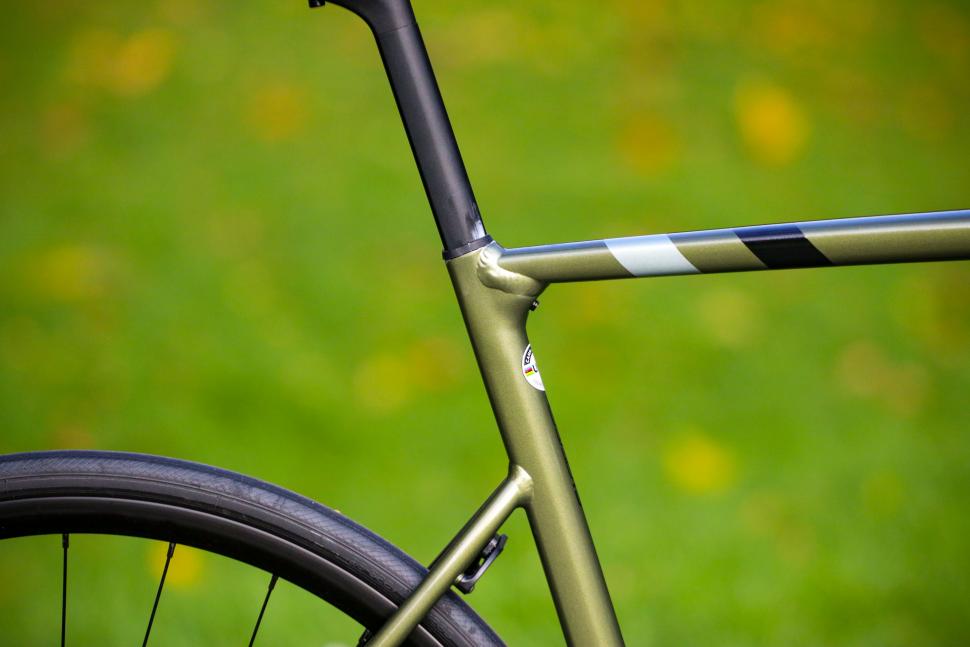
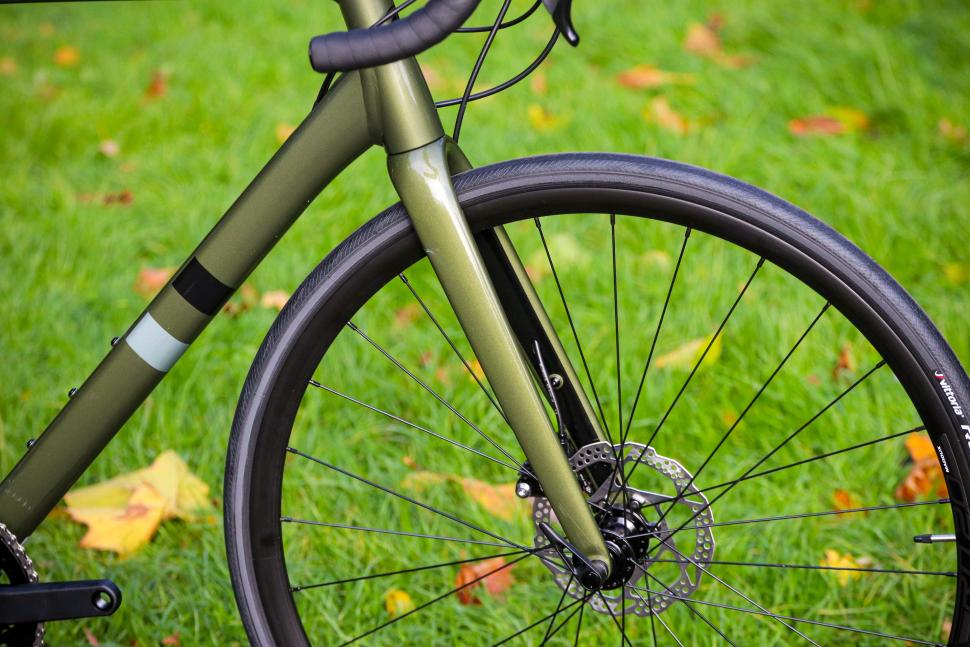
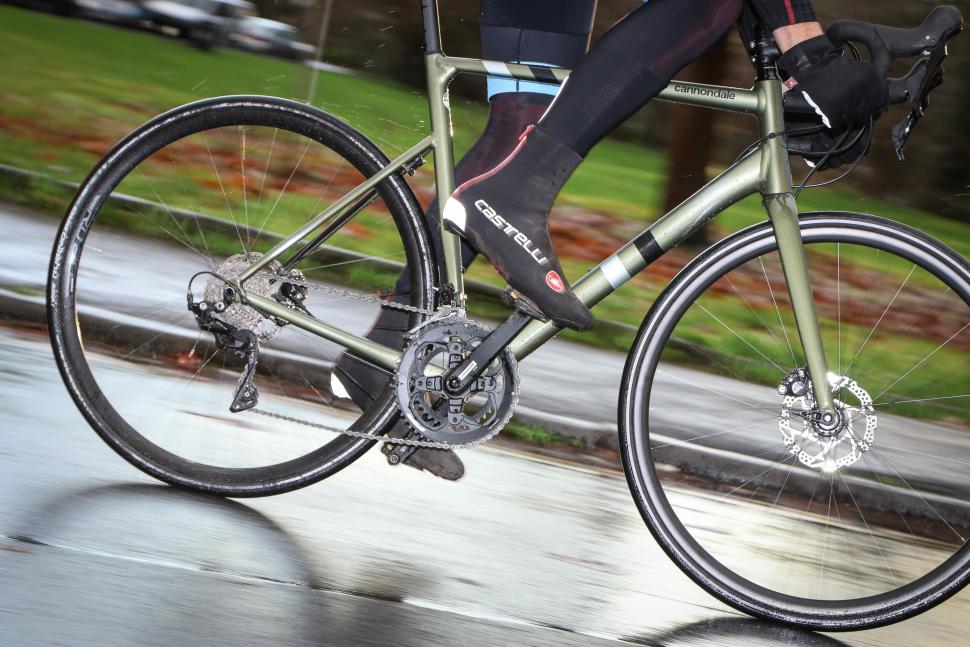
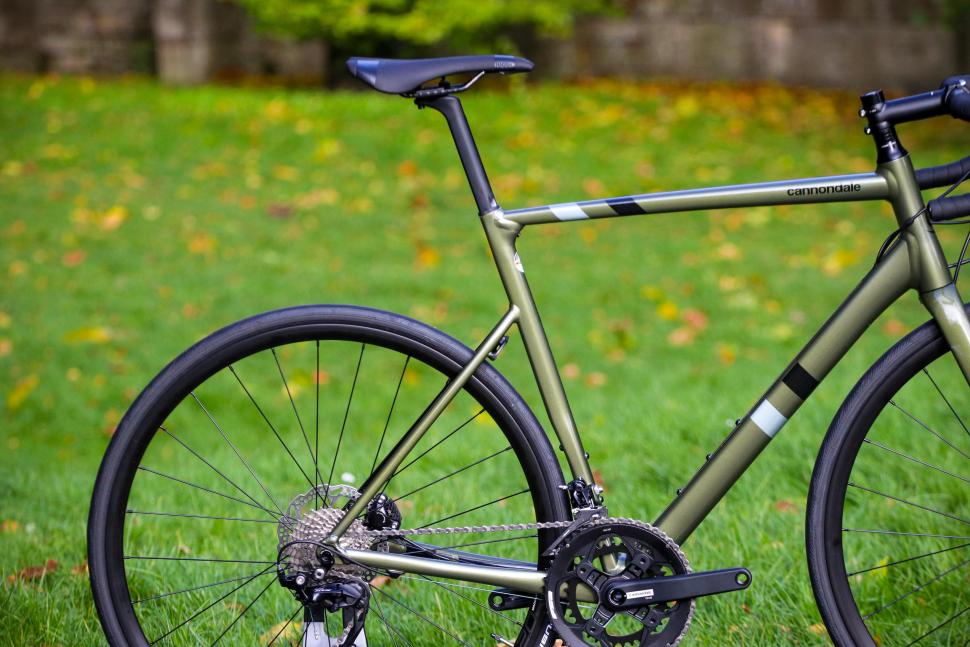

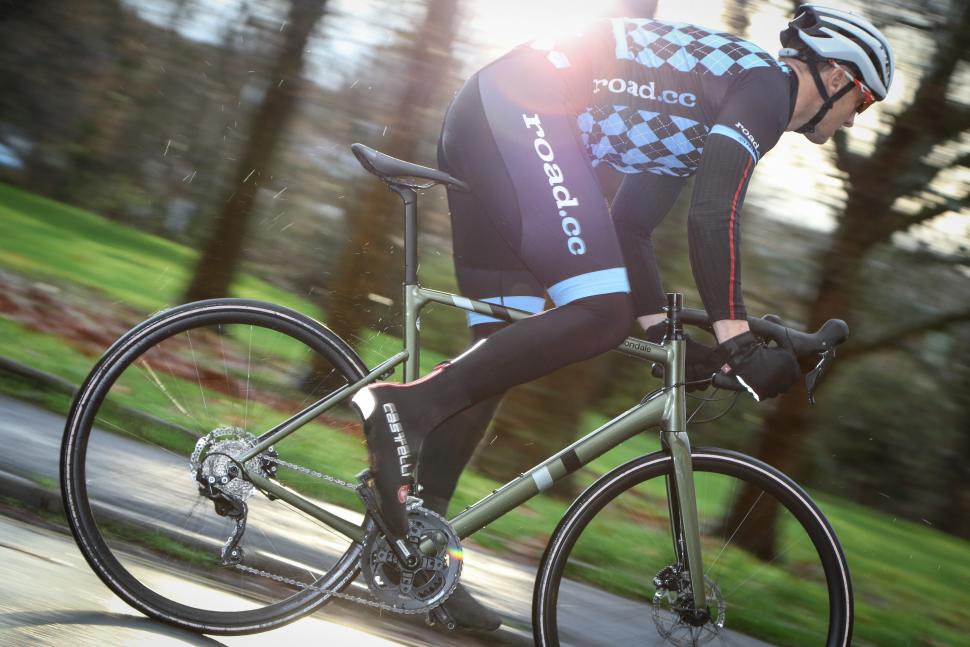

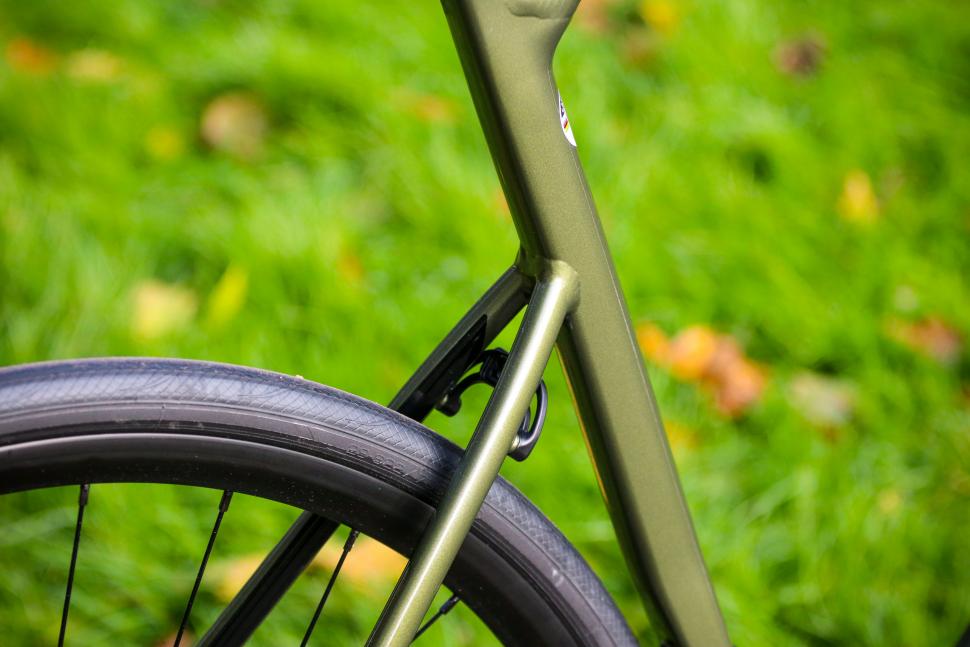
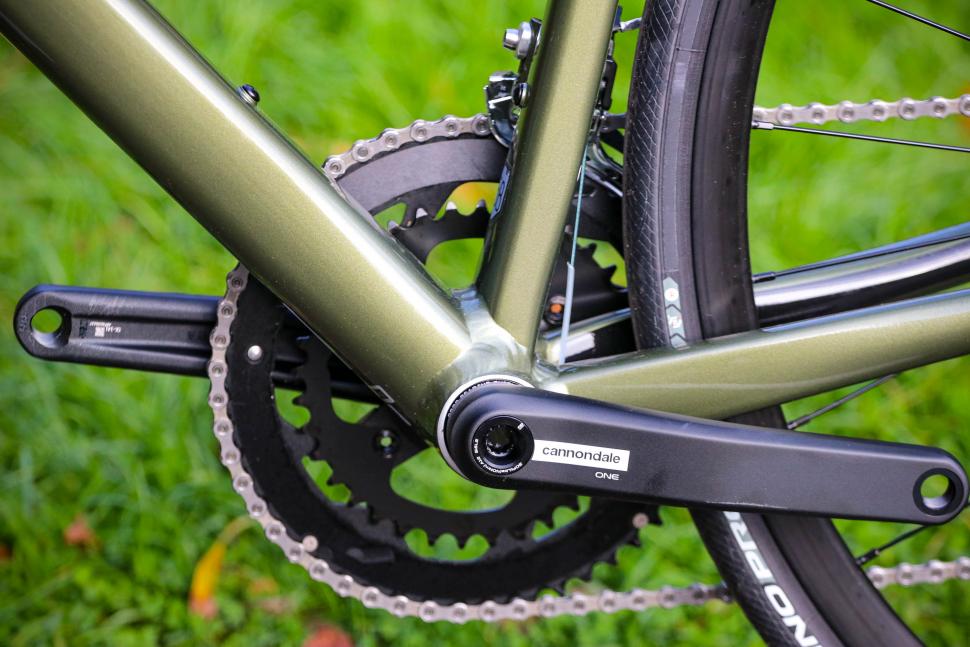
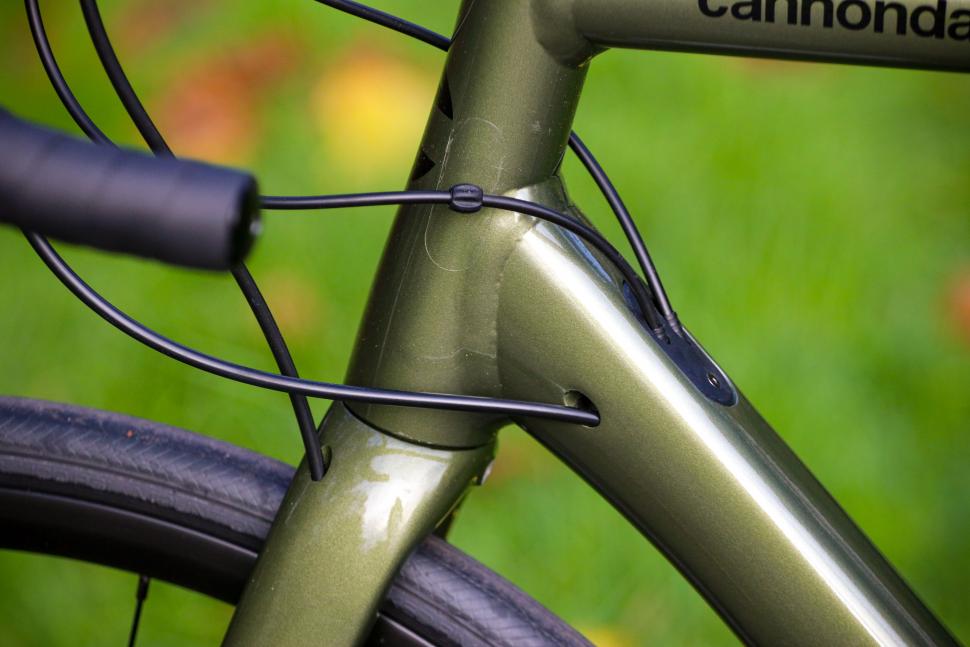
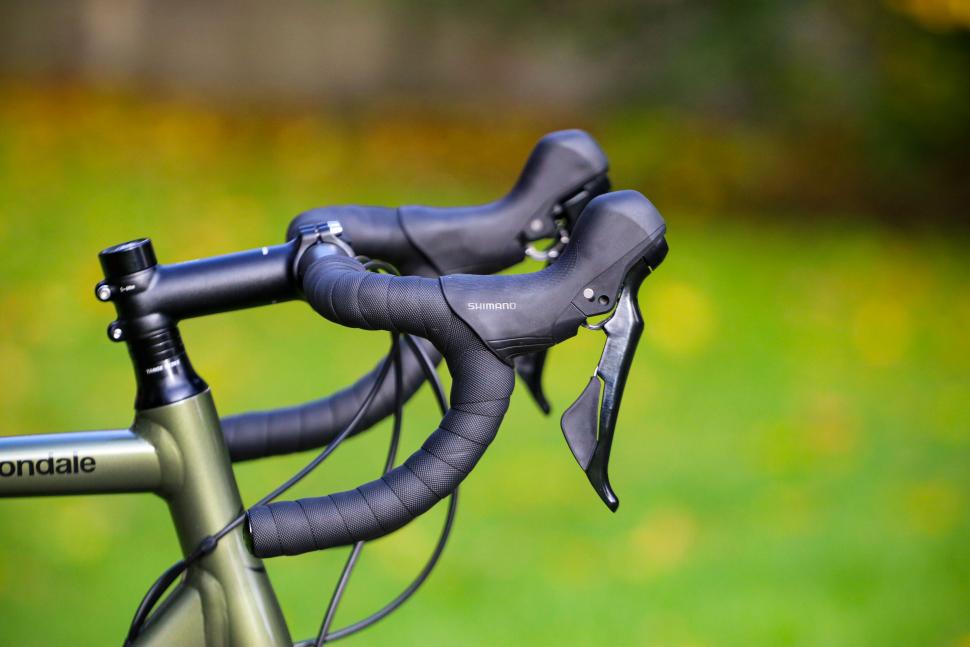
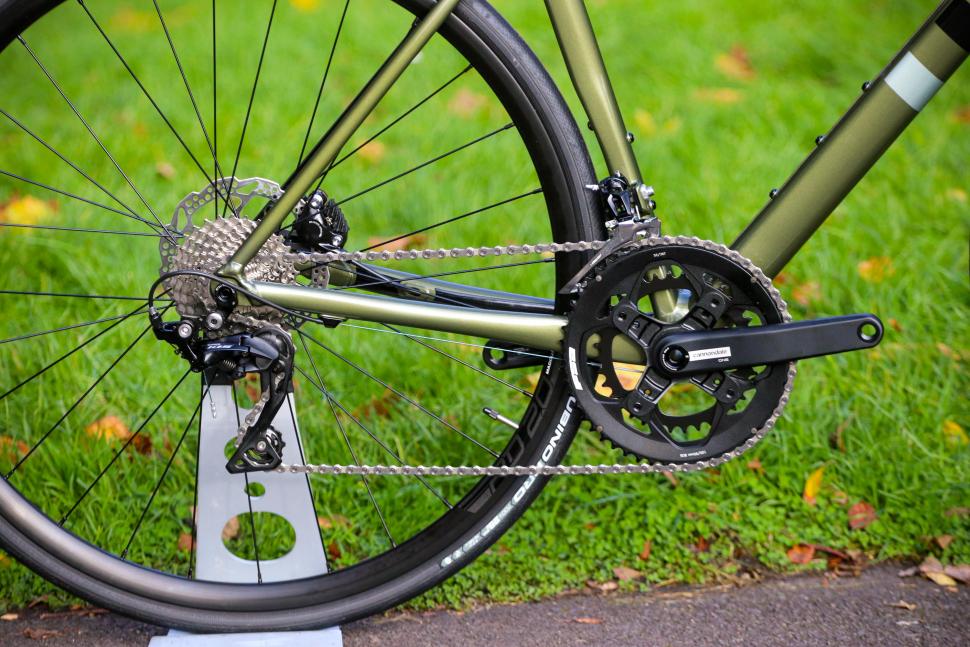
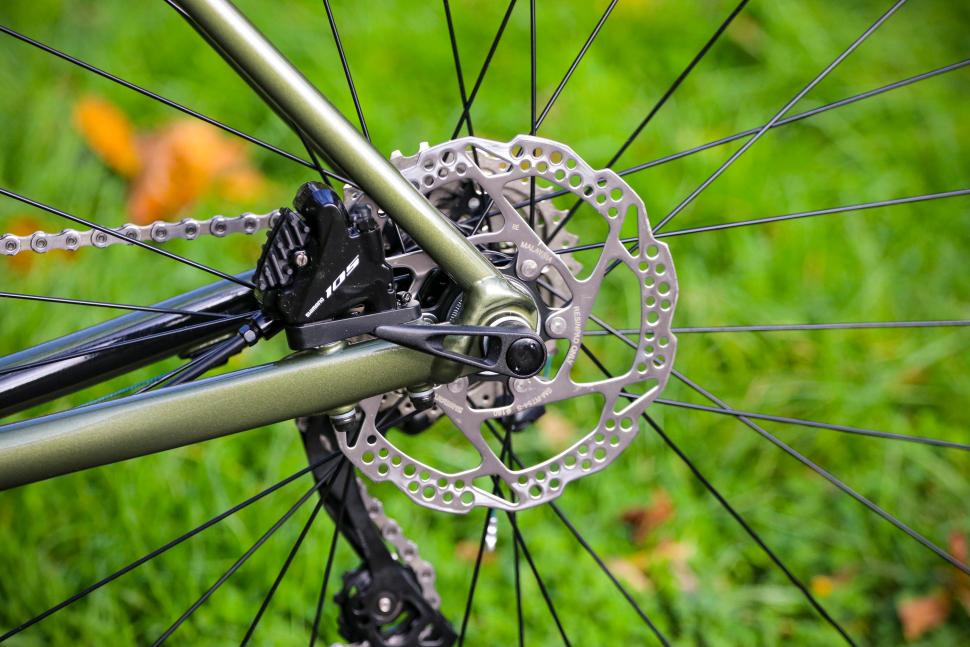
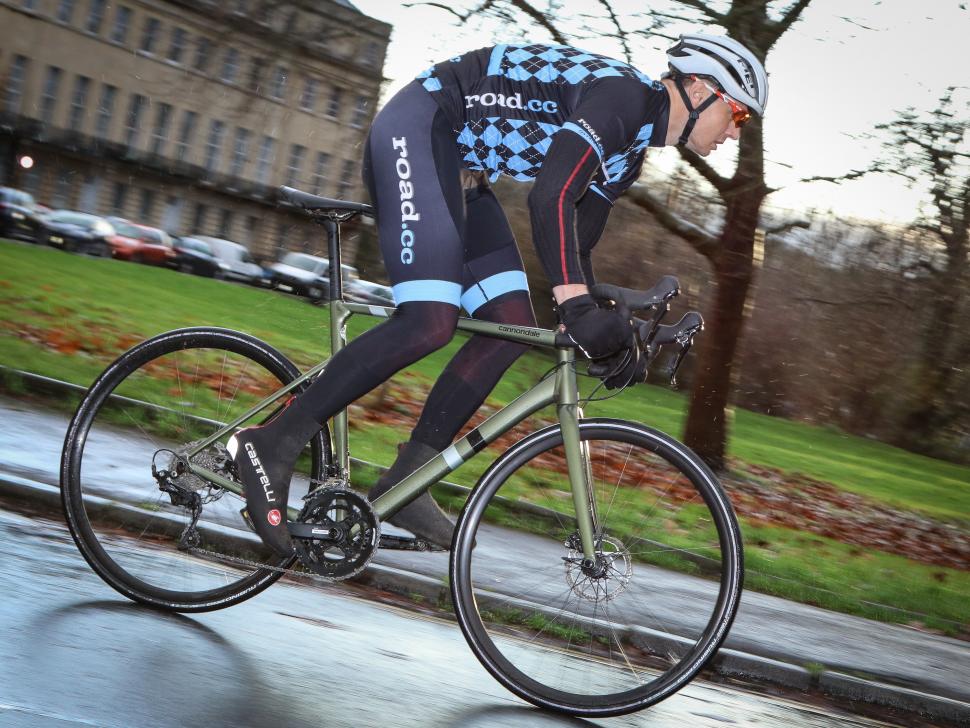



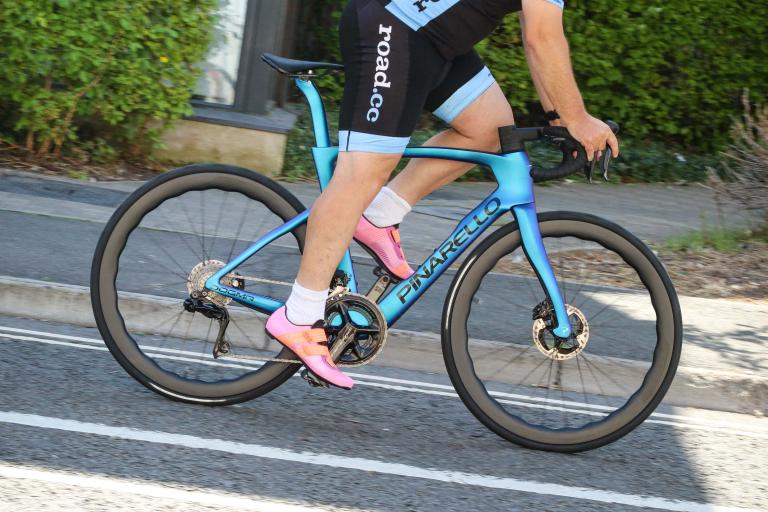
Add new comment
20 comments
Those welds are so awful and the Cannondale logo on the top tube ruins the looks as well...Spec-wise, you get an FSA chainset that you usually see on sub 1000 bikes and very weighty rims as well as an alloy seatpost while you can get an Emonda ALR with a full 105 gruppo, decent wheelset and carbon seatpost for a lower price.
For most of the people most of the time, something like this bike will be fine - amateur racer or not. There is a reason pro's don't race aluminium any more. So far as Principia's back in the day, it's probably a bit like harking back to some old sports car that might be a blast to drive but ultimately it sketchy as hell in the wet, guzzles fuel, doesn't start every time and is without modern comforts - Versus say a modern Ford Focus RS, fast, fairly civilised, reliable etc....
The discs make the CAAD13 heavy but no heavier than any other disc bike at this price.
Having a CAAD12 rim brake bike and and an Emonda ALR, the CAAD feels slightly stiffer and more responsive. But only slightly.
By the time you have this bike ready to ride (pedals, cages, computer) it will weigh 21lbs. Think about that. For the same money you could get a Canyon CF SL 8.0, it will have Ultegra and will weigh 16lb kitted out... THAT IS 5LBS LESS. Cannondale has jumped the shark.
Not really a fair comparison. The disc version of the SL 8 is £2,400. That's 25% more.
Yes it is lighter and, yes the components are better but you'd expect that when it's significantly more expensive.
Yet the reviewer made a ridiculously stupid comparison to an out and out pro level race machine from 15-20 years ago.
Trek Emonda ALR5 disc is a couple of hundred cheaper and a smidge under 9kg and doesn't look like a bidge job.
It wasn't a ridiculous comparison.
He compared the silhouette of this bike to that of a top level race bike from 15-20 years ago.
He then opined that the changes in frame design that led to the changed silhouette have also led to increased ride comfort.
Have you ridden a CAAD13?
If not you can't possibly comment on whether the statement is accurate or not.
Edit: Looking at the road.cc review page for the ALR5 it's only 100g lighter and the best price links makes it about £60 cheaper. Not really a significant difference on either measure.
Just got a close look at one of these out on the road. The colour looks very nice in the sun: distinctive but not in a flashy way. The welds are fairly noticeable, it's true.
Heavier than a 2007 alu triangled hybrid that has chunky carbon forks you can put low riders on and fit 55mm tyres through and 32 spoke box section rims. the weld between the top tube and the seat tube is an absolute abomination, it looks like a really bad repair job.
Brett, have you actually ridden a pro level alu bike from the early 00s with 28mm modern tyres?, let's say an out and out race bike like a Principia RS6 Pro?
Be honest, the 'dale is not and is not remotely the same as a pro level or even top end amateur level race bike is it, so to try to compare apples with oranges is daft at best, even more so when the tyre sizes and type of cycling you're doing are utterly different.
This is a good bike for an enthusiast who doesn't want carbon however I think it's significantly overpriced for what it is, a bike that would be left for dead in a crit against a pro level alu bike from what "Cipolini rode BITD" as you state ... if we are making silly comparisons right?
It's a great way to upsale what is neither fish nor fowl, it's a real inbetweeny 'sports' type bike.
Shame your getting placeholder boat anchors as wheels on a bike of this price
Aluminium welds just look like that, unless you add filler material before painting, which is how you get the 'smooth weld' look.
Nonsense. I can assure you that Trek don't use any filler on the Emonda ALR, wich has the smoothest aluminium welds on the market.
The welds look about the same as on my CAAD12, smooth but not invisible. Probably depends a bit on the colour as to whether they stand out so much or not.
I'm interested in a 5kg Aluminium Emonda.
The dull colour schemes do look a little better in the flesh having seen one the other day but still glad I bought a 12.
Why are people so bothered by welds on an aluminium bike? Either buy carbon or accept they're part of it, surely?
Not when they were almost seamless on the CAAD 12...
Aesthetically the new Cannondales are awful IMHO. I have a CAAD 12 & much prefer the looks of mine than anything in the 2020 range.
The sooner they go back to the Cannondale logo on the downtube the better.
Great bikes though.
Does anyone know what tyre size the disc version will take with mudguards?
Also, do proper mudguards fit on easily or do they need bodging like some other bikes.
A friend has one and he just squeezed in 28's with SKS Bluemels. The usual amount of bodging was required to fit the mudguards as a task like fitting mudguards will never be straight forward.
I just don't understand why important information such as this is never provided by reviewers.
It appears that the CAAD 13 is being positioned more as a endurance/all year machine away from the crit weapon of the CAAD 12. I love my CAAD 12 and you can get some fantastic deals on them right now, I'd definitely point people that way over the CAAD 13 which IMO is pretty pricey for what it is.
Genuine question by someone with barely any knowledge in this field, surely by the time air reaches the seatpost and seatstays it's pretty turbulent due to the movement of the riders legs, surely the gains in these kind of areas would be minimal compared to a deep front wheel and aero cockpit?
Exactly. It would be hugely useful in these reviews if the reviewer actually tried to fit some guards, told us all how difficult it was and included some pictures.
Thanks for the review. Surely a good bike, but regardless of how much the aluminium construction may have improved over the CAAD 12, those mammoth welds are a visible regression and nowhere near as elegant as before. Surprised there was no mention of this (aside from the Cannondale marketing quotes at the end, which only hint at the issue by saying the new aluminium being harder to work with).